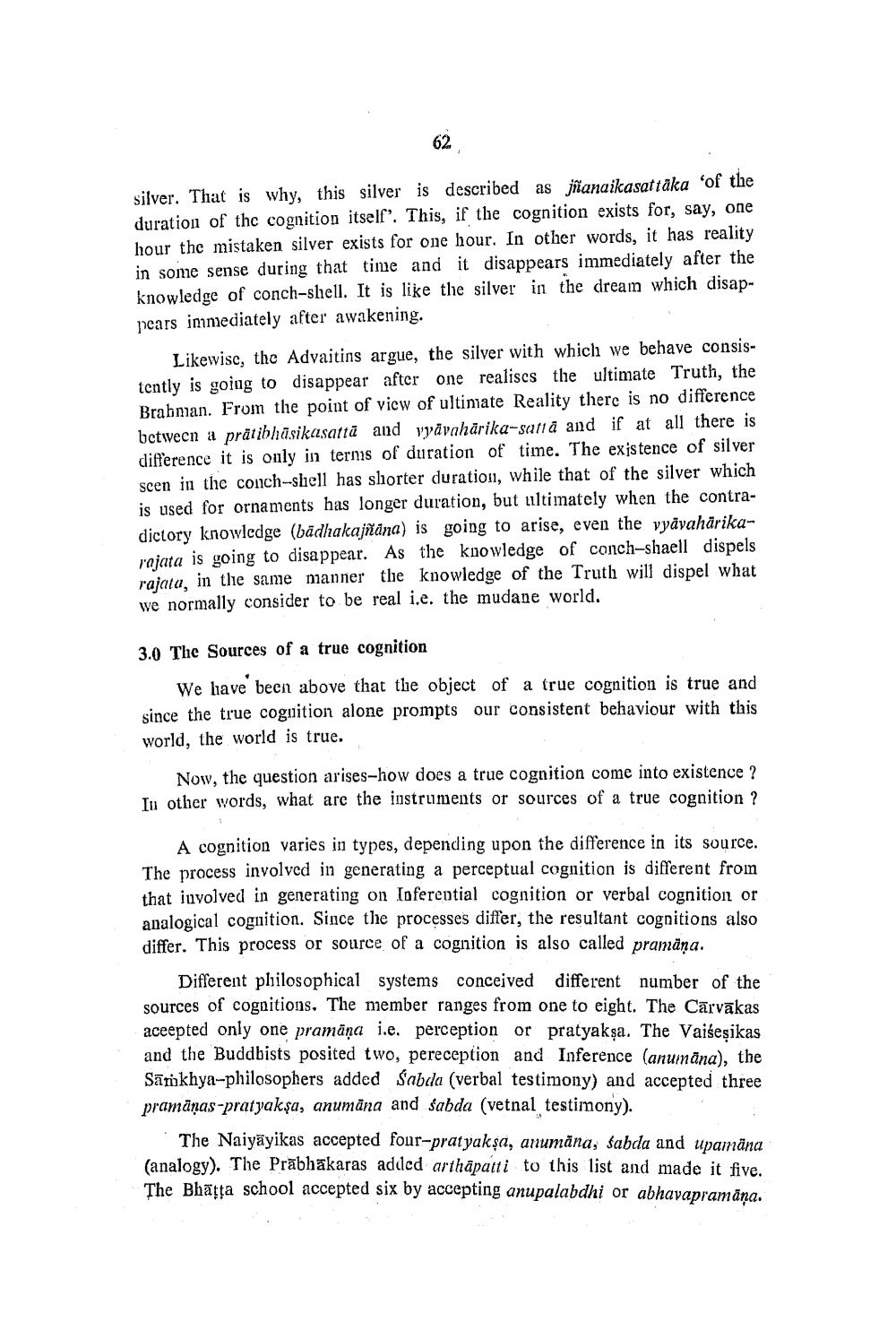________________
silver. That is why, this silver is described as jñanaikasat taka ‘of the duration of the cognition itself'. This, if the cognition exists for, say, one hour the mistaken silver exists for one hour. In other words, it has reality in some sense during that time and it disappears immediately after the knowledge of conch-shell. It is like the silver in the dream which disappears immediately after awakening.
Likewise, the Advaitins argue, the silver with which we behave consistently is going to disappear after one realiscs the ultimate Truth, the Brabman. From the point of vicw of ultimate Reality there is no difference between a prätibhūsikasattā and vyāvahārika-satia and if at all there is difference it is only in terms of duration of time. The existence of silver scen in the conch-shell has shorter duration, while that of the silver which is used for ornaments has longer duration, but ultiinately when the contradictory knowledge (bādhakajñāna) is going to arise, even the yyavahärikarajata is going to disappear. As the kuowledge of conch-shaell dispels rajata, in the same manner the knowledge of the Truth will dispel what we normally consider to be real i.e. the mudane world.
3.0 The Sources of a true cognition
We liave been above that the object of a true cognition is true and since the true coguition alone prompts our consistent behaviour with this world, the world is true.
Now, the question arises-how does a true cognition come into existence ? In other words, what are the instruments or sources of a true cognition ?
A cognition varies in types, depending upon the difference in its source. The process involved in generating a perceptual cognition is different from that involved in generating on Ioferential cognition or verbal cognition or analogical cognition. Since the processes differ, the resultant cognitions also differ. This process or source of a cognition is also called pramana.
Different pliilosophical systems conceived different number of the sources of cognitions. The member ranges from one to eight. The Cārvākas aceepted only one pramāņa i.e. perception or pratyakşa. The Vaiseșikas and the Buddhists posited two, pereception and Inference (anum äna), the Sāmkhya-philosophers added Sabda (verbal testimony) and accepted three pramāṇas-pratyakşa, anumāna and sabda (vetnal testimony).
The Naiyāyikas accepted four-pratyakşa, anumäna, sabda and upamāna (analogy). The Prabhakaras added arthāpatti to this list and made it five. The Bhatta school accepted six by accepting anupalabdhi or abhavapramäna.




